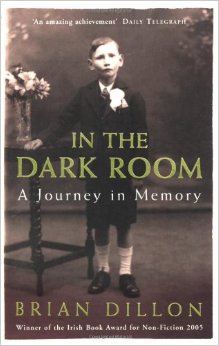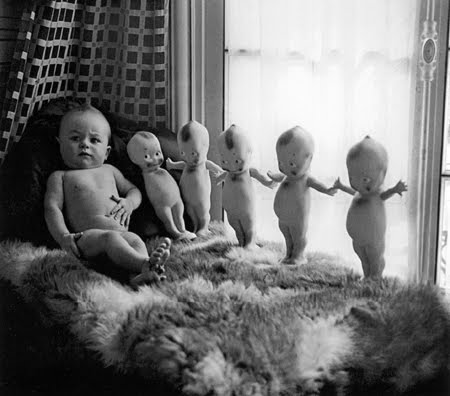Books:
- Auster, P. (1988). The invention of solitude. New York, N.Y., U.S.A.: Penguin.
- org, (2015). Sally Mann – Immediate Family – Photography Book – Aperture Foundation. [online] Available at: http://aperture.org/shop/books/sally-mann-immediate-family-book [Accessed 18 Mar. 2015].
- Barney, Tina, Grundburg, Andy, ‘Tina Barney Photographs: Theater of Manners’, Scalo Publishers, 1997
- Bright, S., 2005. Art photography Now. London: Thames and Hudson
- Bussard, Katherine A, ‘So the story goes’ exhibition catalogue, Yale UP, New Haven, 2006
- Coles, Robert, ‘Dorothea Lange: Photographs of a lifetime’ Aperture, New York, 1982
- Collings, Matthew ‘Sarah Lucas (Modern Art Series)’ 1st Edition, Tate Publishing, 2002
- Cotton, C., 2004. The Photograph as Contemporary Art. London: Thames and Hudson
- Davis, Keith F, Botkin, Kelle A, ‘The photographs of Dorothea Lange’ Abrams, New York, 1995
- Dillon, Brian. In The Dark Room. Dublin, Ireland: Penguin Ireland, 2005. Print
- Don mcullin: ‘Don mcullin’ published by Johnathan Cape 2003
- Foresta, Merry A, ‘The Europeans: photographs by Tina Barney’ Barbican Art Gallery Steidl Publishers, 2005
- Freud, Sigmund. The “Uncanny”. 1st ed. First published in Imago, Bd. V., 1919; reprinted in Sammlung, Fünfte Folge. [Translated by Alix Strachey.]: N.p., 1919. Print.
- Gordon, Linda ‘Dorothea Lange: A Life Beyond Limits’, W. Norton and Co, 2011
- Johnson, Dr Clare, ‘Femininity, Time and Feminist Art’ pp115-132, Palgrave Macmillan 2013
- La Grange, A., 2005. Basic critical theory for photographers. London: Focal Press
- Mann, S. (1992). Immediate family. London: Phaidon.
- Moore, K. (2004). Jacques Henri Lartigue. Princeton: Princeton University Press.
- Neri, Louise, Aletti, Vince, ‘Settings and players: theatrical ambiguity in American photography’ exhibition catalogue, White Cube, London, 2001
- Partridge, Elizabeth, ‘Dorothea Lange: Grab A Hunk of Lighting’, Chronicle Books, 2013
- Partridge, Elizabeth, ‘Dorothea Lange: A visual life’ Smithsonian Institution Press, Washington, 1994
- Quinnel, Justin, ‘Mouth Piece’ Dewi Lewis Publishing 2006
- Ravenal, J., Strauss, D., Tucker, A. and Mann, S. (2010). Sally Mann. Richmond, VA: Virginia Museum of Fine Arts.
- Rose, Gillian ‘Visual Methodologies: an introduction to researching with visual materials’ Third Edition, Sage Publications, 2013, Chapter ‘Content Analysis’ pp54-68
- Simon Nina ‘The Participatory Museum’ Chapter 4- ‘Social Objects’ 2010
- Shore, Robert, “Post Photography- The Artist With a Camera” Laurence King Publishers, London, 2014
- Stewart, Kathleen. Ordinary Affects. Durham, NC: Duke University Press, 2007. Print.
- Szarkowski, J. 2007. The photographers’ Eye. New York: The Museum of Modern Art
- Walker, Tim, and Ruth Ansel. Tim Walker. London: Thames & Hudson, 2012. Print.
Exhibitions:
- Andre Lichtenburg Solent Showcase Gallery – Southampton – UK – 13th Feb / 21st Mar 2015
- Taylor wessing photographic portrait prize 2014 visited 4th feb 2015
- National Gallery London, Visited 4th February 2015
- National Portrait gallery London, Visited 4th February 2015
Journals:
- Aperture 216 ‘Fashion” pp121 margaret durow ‘miami,2012’
- Cox, Christopher ‘Dorothea Lange’, Aperture, 1987
- Hotshoe issue 188, summer 2014 roe ethridge pp34-45
- Hotshoe issue 188 Summer 2014 Lisa Barnard pp56-67
- Hotshoe issue 189, autumn 2014, Michael Lundgren pp34-45
- Hotshoe issue 189 Autumn 2014 Aaron Schuman pp56-67
- Portfolio #29 June 1999 Surveillance and solitude jame casebere david bate pp50-51
- Portfolio #28 December 1998 sophie calle pp52-53
- Portfolio #35 Mari Mahr ‘Symbols of ourselves’ pp.46-49 and pp63
- Portfolio #35 Sam Taylor Wood pp.52
- Portfolio #35 david bate pp.26-27 and pp18
- Portfolio #52 sarah lynch pp52
- Portfolio #52 Karen Knorr ‘Fables’
DVD/Film:
- Don mcullin ‘seeking the light’ online video source http://cpn.canon-europe.com/content/Don_McCullin.do02.15
- The Night At The Museum: Secret Of The Tomb. British Columbia: Shawn Levy, 2014. film.-
- Toy Story 3. Disney, Pixar: Lee Unkrich, 2010. DVD.-
Internet
- Barney, Tina, http://www.artic.edu/aic/exhibitions/story/barney.html Online Source (Accessed 14 Jan 2015)
- Barney, Tina http://www.gallery339.com/html/artistresults.asp?artist=49 Online Source (Accessed 14 Jan 2015)
- Barney, Tina http://www.marquette.edu/haggerty/exhibit_2012_01_tina_barney.shtml Online Source (Accessed 14 Jan 2015)
- Barney, Tina, http://www.moma.org/collection/artist.php?artist_id=343 Online Source (Accessed 14 Jan 2015)
- Charlie Hebdo Shootings: http://stopwar.org.uk/news/charlie-hebdo-the-hypocrisy-of-pencils-and-the-limits-of-the-free-speech-crusade
- Coomes, Phil, 2012 http://www.bbc.co.uk/news/in-pictures-19555676 Online Article Accessed 02.02.15
- Hewitt, Clare, http://clarehewitt.co.uk/portraits-2/ online source visited 26th January 2015
- Huie, Wing Young. ‘The Third Place Gallery – Wingyounghuie’. com. N.p., 2015. Web. 24 Mar. 2015.
- Lange, Dorothea. [Internet]. 2015. The Biography.com website. Available from: http://www.biography.com/people/dorothea-lange-9372993 (Accessed 14 Jan 2015)
- Lange, Dorothea, http://www.moma.org/collection/artist.php?artist_id=3373 online source (Accessed 14 Jan 2015)
- Lange, Dorothea http://cybermuse.gallery.ca/cybermuse/enthusiast/acquisitions/2004-2005/Lange_text_e.jsp Online source (Accessed 17th January 2015)
- com, (2015). Si j’avais su – 2010 – Laurence Demaison – Site Officiel. [online] Available at: http://www.laurencedemaison.com/si-javais-su-2010/ [Accessed 13 Mar. 2015].
- McMurdo, Wendy. ‘Wendy Mcmurdo – Artist (Photography/Digital Media)’. com. N.p., 2015. Web. 24 Mar. 2015.
- Navarro, Donna, 2012 http://donnanavarro.com/mind-media-award-2012/ Online Article Accessed 02.02.15
- org.uk, (2015). National Portrait Gallery – Sarah Lucas Self-Portraits. [online] Available at: http://www.npg.org.uk/whatson/display/2011/sarah-lucas-self-portraits.php [Accessed 10th Mar. 2015].
- com, (2015). family – definition of family in English from the Oxford dictionary. [online] Available at: http://www.oxforddictionaries.com/definition/english/family [Accessed 17 Mar. 2015].
- Pannack Laura http://laurapannack.com Visited 22.01.15
- Quinnel, Justin, http://pinholephotography.org/gallery/mouth/index.html Visited 2nd February 2015
- Roberts, Michelle, 2012 http://www.bbc.co.uk/news/health-19959565 Online Article Accessed 02.02.15
- Rodriguez, Levin. ‘..The Berkemeyer Project..: Symbolic Meaning Of Objects Used In Vanitas Paintings’. blogspot.co.uk. N.p., 2012. Web. 18 Feb. 2015.
- Rosenbaum, Nancy, 2014 http://www.nancyrosenbaum.com/the-power-of-personal-projects/ Online Article Accessed 02.02.15
- Singh, Sonia. ‘Tree Change Dolls™’. Treechangedolls.tumblr.com. N.p., 2015. Web. 7 Apr. 2015.
- Smith, Karl. ‘Interview With Tim Walker | The White Review’. Thewhitereview.org. N.p., 2015. Web. 16 Apr. 2015.
- Smithson, Aline, ‘Hannah Kozak My Mothers Dolls’ (October 2014) http://lenscratch.com/2014/10/hannah-kozak-my-mothers-dolls/7th March 2015
- Taylor Johnson, Sam http://whitecube.com/artists/sam_taylor-johnson/ Visited 30.01.15 and 17.02.15
- The History Place http://www.historyplace.com/unitedstates/lange/ online source 2012, (Accessed 14 Jan 2015)
- The Photographers’ Gallery, (2015). Jacques-Henri Lartigue – The Photographers’ Gallery. [online] Available at: http://thephotographersgallery.org.uk/jacques-henrilartigue [Accessed 18 Mar. 2015].
- Tunbridge Emma http://emmatunbridgephotography.viewbook.com/overview-1 visited 22.1.15
- Van Scoy, Susan A. ‘Eexteriors, Interiors and Positionality: The photography of Tina Barney’ Stony Brook University, 2010 https://dspace.sunyconnect.suny.edu/bitstream/handle/1951/55656/VanScoy_grad.sunysb_0771E_10055.pdf?sequence=1 Online Source (Accessed 17th January 2015)
- Walker, Tim. ‘Biography – Tim Walker Photography’. Timwalkerphotography.com. N.p., 2015. Web. 15 Apr. 2015.
- Walker, Tim. ‘Tim Walker Photography’. Timwalkerphotography.com. N.p., 2015. Web. 15 Apr. 2015.









